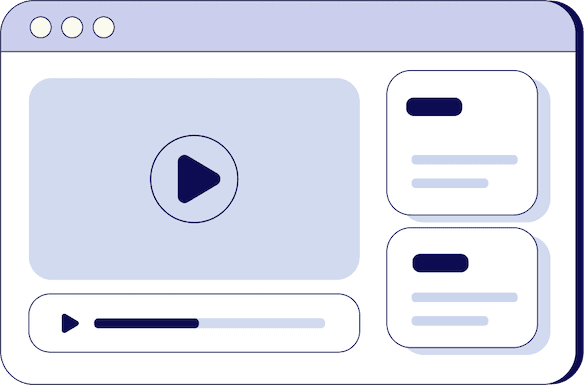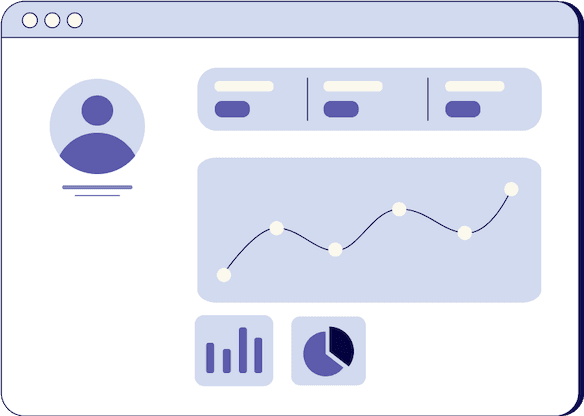
Leveraging Signals
Mark Colgan
B2B Sales Consultant, Lead Sourcing Detective

- duration
- 22 min
- Average Score
- 93%
- Stars
- 5
In modern sales, generic prospecting is no longer enough. Sales reps need to focus on companies that are actively showing signs of interest. This is where buying signals come in.
By identifying and leveraging signals, you can increase response rates, prioritize outreach, and craft more relevant messaging.
What Are Buying Signals?
Buying signals are indicators that suggest a company or individual may need your product or service. While they don’t guarantee interest, they significantly increase the chances of engagement when used correctly.
Why Are Buying Signals Important?
- Increase response rates – Prospects are more likely to engage when there’s a clear reason for outreach.
- Reduce wasted effort – Avoid spending time on leads that have no real intent.
- Improve messaging relevance – Personalized outreach based on signals leads to better conversations.
The 3 Types of Buying Signals
To use signals effectively, you need to understand the three main types:
1. Account-Level Signals
These are company-wide events that indicate a business is undergoing change. Common examples include:
- A company raising a round of funding, which suggests they have the budget to invest in new solutions.
- Hiring for key roles, which could mean they’re expanding and in need of additional tools or services.
- Opening a new office or expanding into a new market, signaling business growth.
2. Individual-Level Signals
These signals relate to role changes and activities of specific decision-makers. Key examples include:
- A new executive hire, as new leaders often introduce new solutions they’ve used before.
- A promotion within the company, which might bring new responsibilities and budget control.
- A direct request for recommendations, such as a LinkedIn post asking for tool suggestions.
3. Intent-Based Signals
Intent-based signals come from online behaviors that indicate a prospect is researching solutions. These include:
- Competitor research, such as a prospect exploring alternatives to their current provider.
- Website visits, particularly to key pages like pricing or case studies.
- Engagement with industry content, such as commenting on a relevant LinkedIn post.
Weak vs. Strong Signals: How to Prioritize
Not all buying signals are created equal. Some carry more weight than others and should be prioritized accordingly.
- A weak signal might be something subtle, like a prospect following a competitor on LinkedIn. This could indicate curiosity, but it doesn’t confirm they are actively looking for a solution.
- A strong signal, on the other hand, is a direct indicator of potential intent. For example, a company that has just raised a round of funding and is hiring for sales roles is likely expanding, making them a prime target for sales tools and training solutions.
Best practice: Combine multiple signals to improve accuracy. A new hire at a competitor plus website visits plus a funding round is a much stronger indicator than any one of these alone.
Where to Find Buying Signals
The best sales reps know where to look for reliable data. Some of the best sources include:
Best Sources for Account-Level Signals
- Crunchbase – Tracks funding rounds and company acquisitions.
- LinkedIn Sales Navigator – Shows hiring trends and company growth.
- BuiltWith – Identifies changes in company tech stacks.
Best Sources for Individual-Level Signals
- LinkedIn – Provides updates on job changes, promotions, and engagement with relevant topics.
- UserGems – Tracks past champions moving to new companies, creating opportunities to re-engage.
- Apollo.io – Delivers up-to-date contact and company information.
Best Sources for Intent-Based Signals
- SimilarWeb – Tracks spikes and decreases in website traffic.
- G2 & Capterra – Monitors negative reviews on competitor products, signaling potential dissatisfaction.
- TriggerFi – Identifies LinkedIn posts indicating purchase intent.
How to Use Buying Signals in Sales Outreach
Once you’ve identified signals, you need to integrate them into your outbound strategy. Follow these best practices:
1. Don’t Always Mention the Signal Directly
Instead of saying, “I saw you raised $30M in funding,” focus on how that funding might impact their business.
A better approach would be:
"Many companies in your position invest in [solution] to scale operations efficiently. Curious if that’s a priority for your team?"
2. Avoid Making Assumptions
A job promotion might mean new budgets, or it might mean a smaller team due to layoffs. Instead of assuming their needs, ask insightful questions to determine the best approach.
3. Always Have a Fallback Approach
If you can’t find strong signals, fall back on Persona-level pain points.
- Sales leaders care about increasing pipeline and improving win rates.
- CFOs focus on financial visibility and cost efficiency.
- Marketing leaders prioritize lead generation and demand growth.
If no signals exist, build your messaging around these ever-present challenges.
Advanced Strategy: Signal Stacking
Signal stacking means combining multiple signals for a stronger case to reach out. The more signals that align, the higher the likelihood of engagement.
For example, a new VP of Sales hire alone might not indicate immediate intent. However, if that company also just raised funding and has job postings for additional sales roles, it strongly suggests they are scaling their team and could benefit from a sales enablement solution.
Similarly, a company expanding into a new market might not seem significant at first. But if they are also hiring for marketing roles and have increased their ad spend, they could be in need of additional marketing services.
The more signals you stack, the stronger the likelihood of engagement.
Key Takeaways
- Buying signals improve outbound success by increasing relevance and response rates.
- There are three main types of signals: Account-level, Individual-level, and Intent-based.
- Not all signals are equal—prioritize strong signals and avoid relying on weak ones.
- Use multiple sources like LinkedIn, Crunchbase, BuiltWith, and intent data tools to find signals.
- Signal stacking is a powerful approach to increase accuracy and improve response rates.
By incorporating buying signals into your list-building and outreach strategy, you can dramatically improve your prospecting results.
How Triple Session works
Training, Testing, & Feedback
Triple Session's proven formula accelerates your sales performance through consistent, organized practice, backed by measurable results.

Bite-Sized Knowledge
Our expert-led video sessions simplify complex sales concepts into easy-to-digest 5-15 minute videos for better retention.

Test Your Understanding
After each session, there will be a quiz to test your understanding and help you improve on any areas that need more attention.

Evaluate and Grow
Get progress snapshots after each quiz to track your improvements and achieve your sales mastery goals.